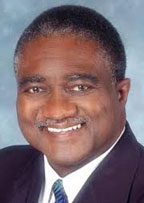
Ruth Bader Ginsburg is becoming the new Thurgood Marshall
By George E. Curry
If you’re looking for the justice on the Supreme Court who mirrors Thurgood Marshall’s tenure on the bench, it is not Sonia Sotomayor, the “Wise Latina.” And it certainly isn’t Clarence Thomas. It is Ruth Bader Ginsburg, the second woman to serve on the nation’s highest court.
This became clear in the Fisher v. University of Texas affirmative action case. With Elena Kagan recusing herself, the court voted 7-1 to send the case back to court of appeals for additional review. The lone dissenter was Ginsburg.
“The University of Texas at Austin (University) … has steered clear of a quota system like the one struck down in Bakke, which excluded all non-minority candidates from competition for a fixed number of seats….” she said. “ Justice Powell’s majority opinion in Bakke “rules out a racial quota or set-aside, in which race is the sole fact of eligibility for certain places in a class.’ And, like so many educational institutions across the Nation, the University has taken care to follow the model a-pproved by the Court in Grutter v. Bollinger.”
In sending Fisher back to the 5th Circuit Court of Appeals in New Orleans, the 7-1 majority emphasized that the lower court should apply a standard of strict scrutiny, meaning the University must prove that it has tried all available race-neutral appro-aches before allowing race to be considered a factor in admissions.
Ginsburg wrote in her dissent, “I have said before and reiterate here that only an ostrich could regard the supposedly neutral alternatives as race unconscious.”
Continuing to address the issue of race directly, Ginsburg said, “I have several times explained why government actors, including state universities, need not be blind to the lingering effects of ‘an overtly discriminatory past,’ the legacy of ‘centuries of law-sanctioned inequality.’ Among constitutionally permissible options, I remain convinced, ‘those that candidly disclose their consideration of race [are] preferable to those that conceal it.’”
In Shelby County v. Holder, the Voting Rights Act challenge, Ginsburg filed a dissenting opinion that was joined by Stephen G. Breyer, Sotomayor and Kagan. The conservative majority struck down Section 4 of the Voting Rights Act, effectively gutting one of the nation’s most effective tools to curb discrimination against Black voters.
“In the Court’s view, the very success of Section 5 of the Voting Rights Act demands its dormancy,” Ginsburg said. “Congress was of another mind. Recognizing that large progress has been made, Congress determined, based on a voluminous record, that the scourge of discrimination was not yet extirpated.”
She explained, “The Voting Rights Act of 1965 (VRA) has worked to combat voting discrimination where other remedies had been tried and failed. Particularly effective is the VRA’s requirement of federal preclearance for all changes to voting laws in the regions of the country with the most aggravated records of rank discrimination against minority voting rights.”
Quoting a 1966 decision in South Carolina v. Katzenbach, Ginsburg said, “A century after the Fourteenth and Fifteenth Amendments guaranteed citizens the right to vote free of discrimination on the basis of race, the ‘blight of racial discrimination in voting’ continued to “infec[t] the electoral process in parts of our country.”
The Voting Rights Act directly addressed that infection, Ginsburg stated.
“Although the VRA wrought dramatic changes in the realization of minority voting rights, the Act, to date, surely has not eliminated all vestiges of discrimination against the exercise of the franchise by minority citizens,” she said. “Jurisdictions covered by the preclearance requirement continued to submit, in large numbers, proposed changes to voting laws that the Attorney General declined to approve, auguring that barriers to minority voting would quickly resurface were the preclearance remedy eliminated.”
Ginsburg noted, “After considering the full legislative record, Congress made the following findings: The VRA has directly caused significant progress in eliminating first-generation barriers to ballot access, leading to a marked increase in minority voter registration and turnout and the number of minority elected officials. But despite this progress, “second generation barriers constructed to prevent minority voters from fully participating in the electoral process” continued to exist, as well as racially polarized voting in the covered jurisdictions, which increased the political vulnerability of racial and language minorities in those jurisdictions.”
She noted that Congress, not the judiciary, should have the final say on voting matters.
“The Constitution uses the words ‘right to vote’ in five separate places: the Fourteenth, Fifteenth, Nineteenth, Twenty-Fourth, and Twenty-Sixth Amendments. Each of these Amendments contains the same broad empowerment of Congress to enact ‘appropriate legislation’ to enforce the protected right. The implication is unmistakable: Under our constitutional structure, Congress holds the lead rein in making the right to vote equally real for all U. S. citizens. These Amendments are in line with the special role assigned to Congress in protecting the integrity of the democratic process in federal elections.”
That’s language that would make Thurgood Marshall proud.
